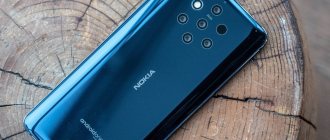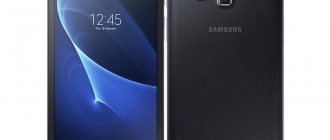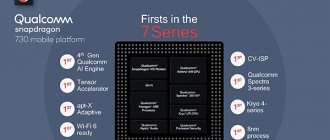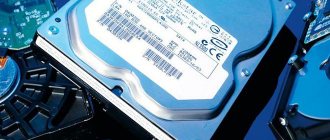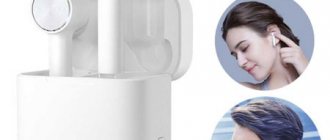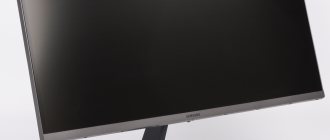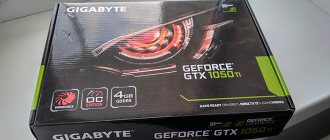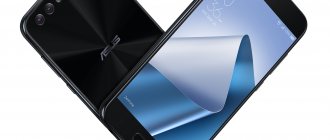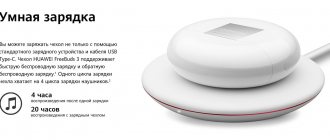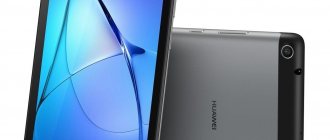The history of smartphones shows how human life is changing. In the 80s, people wanted to carry a communication device in their pocket, but nothing more. In those days, only children played, and cell phones were not available to them. The organizer was a paper notebook, and later a separate electronic device like a calculator. A cassette player allowed me to listen to music on the street. Well, there was no talk about videos - they were viewed only indoors, a VCR was used for this. In short, it is completely incomprehensible why Nokia wanted to combine the functions of a telephone and a personal computer. But, as it turned out, this decision was correct.
Era of the CCP
But in fact, it all did not start with the Finnish giant. Of course, its engineers had first-hand knowledge of PCs - the company produced them with all its might, as you can see by reading the history of Nokia. But the first to significantly reduce the size of the computer was a larger player in this market - IBM. At the beginning of the 90s, the so-called PDAs already existed - pocket personal computers. IBM decided to try to add communication functions to this device.
It must be said that cell phones in those years remained like bricks. Therefore, the product of the computer giant turned out to be very bulky. It was called IBM Simon , presented in 1992 at the COMDEX exhibition. But then it was only a concept - the creators were unable to achieve stable operation from their creation. According to their idea, the device combined a mobile phone, a PDA, a pager and even a fax. A monochrome touch screen was used to control all this functionality. By the way, this allowed IBM Simon to become the first touchscreen phone in the world. Sales of the device started only in 1994, and only in the USA - in 15 states to be precise. The cost was $899.
What could IBM Simon do? It had built-in phone and address books, a calculator, notepad, calendar, world clock, email and several games. A smart keyboard was used to enter text. You could press the screen with your finger or a stylus, which had to be purchased separately. It also supported a PCMCIA memory card. Although there was not much point in it, because the device could not play MP3 music or display pictures. And most importantly: it did not have an operating system that allowed you to install additional applications. That is why the IBM Simon still should not be considered a full-fledged smartphone. It only served as inspiration for other companies.
Another interesting experiment was carried out in 1996. It was carried out by Hewlett-Packard and Nokia. The fruit of their joint labors was a PDA called 700LX . You can consider this device a redesigned version of the HP 200LX, a folding pocket computer equipped with a QWERTY keyboard and a monochrome display. The only noticeable difference was the appearance of a special place for installing a Nokia 2110 . This is how the Americans “elegantly” solved the problem of lack of voice communication. Of course, such a product cannot be called a smartphone, since it consisted of two completely independent devices.
Photo: mycalcdb.free.fr
Photo: mycalcdb.free.fr
Photo: mycalcdb.free.fr
Photo: vchehle.ua
Gradually, the size of cellular communication modules decreased. Mobile phones no longer look like murder weapons. It's time to try to truly combine the capabilities of a PDA and a cell phone in one device. Nokia 9000 Communicator was born , it happened in August 1996. The device had a folding body, an external antenna and a convenient QWERTY keyboard. The information was displayed on a fairly large monochrome display. The device was powered by the GEOS operating system. The dimensions of the communicator were 173 x 65 x 38 mm. The weight was an impressive 397 grams. Interestingly, the device could be used even when closed - for this purpose, there was a numeric keypad and a small screen on the top panel. Nokia will use this form factor more than once in the future. The last time we will see the same number of displays and buttons is in the Nokia E90.
Photo: prodnote.wordpress.com
The disadvantage of the unusual device was its closed operating system. Finnish developers did not have time to introduce the ability to install additional applications here. But even without this, the device was not inferior to full-fledged PDAs that existed at that time. And in addition to this, it allowed you to make calls. That is why we can consider that this is the very first smartphone in the world, albeit with some reservations.
Interesting fact: in the future, for quite a long time, any PDA supplemented with a GSM module will be called a communicator. By analogy with MFPs, which for a very long time were called “copiers,” although this word is a trademark owned by the company of the same name.
When did the first smartphones appear?
Is it possible to imagine a modern person without a mobile phone? I think no. These useful compact gadgets are very firmly rooted in everyday life, which once again clearly confirms the significant role of high technology in our lives. Nowadays, few people can remember at least the approximate date when the first smartphones appeared in the world. Adults simply forgot about that technological breakthrough. And for the younger generation, those times seem almost like a “cave age.” In fact, the first smart phone was created not that long ago!
Mobile phones and smartphones
Let’s immediately separate the concepts of “smartphone” and “mobile phone”. The first category includes devices that have the functionality of a compact computer. And in the second group we will include wireless communication tools used only for voice communication and sending short SMS text messages.
So, the first MOBILE phone (handset without a wire) was developed in 1983 by Motorola specialists. The model was called DynaTAC. That miracle of technology had respectable dimensions: with dimensions of 22.5 x 12.5 x 3.75 cm, the tube weighed about 0.8 kg. The Motorola DynaTAC phone can be seen in feature films made in the 80s. The gadget was a symbol of wealth and success of its owner. You could talk on this phone for up to 35 minutes, after which the battery was discharged. It took about 10 hours to fully charge.
Motorola DynaTAC - the first mobile phone
The first of the “smart” ones
And the first SMARTPHONE in the usual sense for us was created nine years later. In 1992, IBM developers presented the concept of the first “smart” phone to the general public (by the way, the word “smartphone” appeared much later). The device was named IBM Simon. The first smartphone went on mass sale two years later. Simon's price tag definitely “bite”: when purchasing a device with a contract, you had to pay about $900. Alas, the development did not gain global popularity. This can be partly explained by the same shortcomings that were inherent in the Motorola DynaTAC, namely, considerable weight (623 grams excluding the charging dock) and impressive dimensions (20 x 6.4 x 2.8 cm).
IBM Simon - the first smart phone
In addition to the standard voice communication feature, IBM Simon had the following capabilities:
- Able to work with faxes and email;
- Was equipped with an organizer, alarm clock, calendar and calculator;
- Could be used as a pager;
- The device operated on the basis of a 16-bit Vadem processor (16 MHz) and the Datalight ROM-DOS operating system.
Now comes the fun part! The first smartphone was not a push-button one. Simon was equipped with a 4.7-inch display with touch control. Therefore, the device included a stylus for working with basic functions. Now you should not be wondering when the first smartphone with a touch screen appeared. For all its shortcomings, it was IBM Simon that was the “pioneer”.
Later, the era of push-button gadgets with a QWERTY keyboard arrived. The Scandinavian company Nokia, which released a smartphone in 1996 with functionality close to the capabilities of modern “smart” phones, became widely known. Everyone has dreamed of the Nokia 9000 Communicator! This gadget had a comfortable keyboard and two monochrome displays - internal and external.
Nokia 9000 Communicator
And in 1999, another Scandinavian brand Ericsson introduced the world to its smartphone model - the R380. The device was equipped with a 3.7-inch touch screen and ran on the Symbian operating system.
…it was Ericsson who first used the term “smartphone” to refer to a mobile phone. The successful word was picked up by other manufacturers and preserved in its original interpretation to this day.
Ericsson R380s
The first smartphones in Russia
It’s not so difficult to remember when smartphones appeared in Russia. Businessmen at various times owned both Motorola DynaTAC and IBM Simon, but the mass consumer became acquainted with smartphones in the early 2000s. The first devices on the domestic market were Nokia devices (models 9210, 7650).
Nokia 9210 Communicator
Nokia 7650 Communicator
Later they were joined by Sony Ericsson P800 and Siemens SX1. And in 2007, we learned about Apple iPhone gadgets, which to this day are considered one of the leaders in the segment.
Sony Ericsson P800
Siemens SX1
Smartphone development
Subsequently, Nokia released several sequels to its communicator. The 9000i , 9110 and 9110i were not very different from the original The Finns have added the ability to access the Internet and some other functionality. But it remained clear that it was necessary to create a full-fledged operating system that would support the installation of applications from third-party developers. But even the large company Nokia was unable to do this. But a solution to the problem was nevertheless found - in 1998, the Symbian , which will develop an operating system of the same name. In addition to Nokia itself, the consortium included Ericsson, Motorola and Psion. In the future, some other companies joined this community.
Before the first fruits of the consortium's labor, Nokia communicators had no competitors. Of course, interesting products were released in some markets, but for one reason or another they were not in great demand. For example, in 1999, Qualcomm pdQ 800 and pdQ 1900 , operating using Palm OS, were sold in the United States. But buyers were put off by the heavy weight and high cost. Therefore, the American company soon concentrated strictly on mobile processors.
In 2000, the Swedish company Ericsson decided to make its answer to Nokia communicators. She released a device with a large monochrome touch screen and a flip-up lid on which there was a numeric keypad. The model was named Ericsson Smartphone R380 . As you guessed, it was this device that introduced the concept of “smartphone”. They used Symbian OS 5.1 as the operating system. It was still impossible to install third-party applications here. It is possible that this is why Nokia began to use a later version of this operating system in its smartphones.
Ericsson R380 is no good by modern standards. The device had only 4 MB of permanent memory, of which only 1.2 MB was available to the user. The amount of RAM did not exceed 2 MB. Well, its 3.5-inch screen had a resolution of 120 x 360 pixels. The image was displayed on it in four shades of gray. The device was all right only with its weight, which was only 164 grams. A smartphone was sold for $700.
Design by IBM Simon
The appearance of the first IBM Simon touchscreen phone was dictated by fashion trends of the time. The gadget had a rectangular shape, which was very reminiscent of a brick. It was made in black. On the front side there was a screen measuring 160x293 inches. It had a keyboard, the keys of which could be pressed with the stylus supplied with the phone or with your fingers. The top of the phone had a large speaker and a miniature antenna. The manufacturer placed a microphone at the bottom of the front side of the first smartphone. The design was also complemented by the name of the phone, printed in a contrasting color. Control keys were placed on the side panel of the IBM Simon.
The first phone with a touch screen had a fairly significant weight: about 500 g. The charger for this gadget was connected to the network and, like the device itself, was large, which limited the mobility of the device.
Symbian era
It cannot be said that the Ericsson product is the first touchscreen smartphone. Similar devices existed before him. However, it quickly became clear to everyone that touch screens are still far from ideal, and therefore they decided to abandon them for some time. The sixth, seventh and eighth versions of Symbian supported them only in theory, but in practice only devices from Sony Ericsson took advantage of this feature (the mobile divisions of the Japanese and Swedish companies merged at that time). The heyday of the Symbian operating system occurred in the first half of the 2000s. the Nokia 9210 communicator was born . The sixth version of Symbian was used here. Nokia 7650 smartphone was presented . Outwardly, it was quite simple, but it had the Symbian OS 6.1 operating system on board. It finally allowed you to install third-party programs! However, the device had a drawback in the absence of a slot for a memory card. This imposed serious restrictions.
Well, then, as they say, off we go. Gradually, the first smartphones that could be called mass-produced began to roll off the assembly line. People began to understand that these devices could well replace their regular mobile phone - now to use a smartphone they did not need to work as a manager or own some serious company. Also, the spread of Symbian-based devices was facilitated by lower prices. If earlier you could buy a PDA or communicator for $600-$700, then smartphones with the Symbian operating system were sometimes sold for $250-$300. Nokia 6600 , Nokia 3230 were very affordable at one time . The Symbian operating system was also installed on smartphones from Sony Ericsson, Motorola and Samsung, but for various reasons they did not become particularly popular.
Nokia also has the first gaming smartphone. We are, of course, talking about Nokia N-Gage . The device was based on Symbian 6.1, and this can be considered the main reason for its failure. The fact is that the operating system in those years was developing at an unprecedented pace. As a result, this version very quickly became outdated - it was replaced by the “seven”, and then the “eight”. The device quickly became irrelevant. Some technical problems also contributed to low sales - for example, no one liked to make calls using such a smartphone, since for this it was necessary to put it to the ear. However, this problem has been eradicated in N-Gage QD .
Remembering the first smartphones, one cannot help but mention the E-Series and N-Series . Nokia has realized that four-digit model names are extremely difficult to remember. Therefore, subsequently all smartphones were divided into two series. The E-series includes devices that may be needed by an office worker, a bank employee and other serious people. Such devices could boast a pre-installed ability to open office documents, and they could also be used to make group calls. As for the N-series, it includes so-called multimedia devices. They sounded better, they had a better camera, and on their body you could often find buttons associated with controlling the music player.
the Windows Mobile operating system were also popular in those days . Some of them had a touch screen and a stylus, while others had an interface adapted for button control. HTC was more active than others in producing such devices . Its first smartphones were created for other companies, which then sold them under their own brand. Later, the Taiwanese began to use the Qtek brand. And only then did they switch to the HTC brand. Most of all, this manufacturer is remembered for its proprietary shell HTC Sense . It made the interface much more beautiful, and the clock widget didn’t let you take your eyes off it. The first smartphone with this shell was HTC Touch Diamond2 . It was based on Windows Mobile. The proprietary shell made it possible to abandon the stylus, since all the icons and menu items here turned out to be quite large. Later, the company from Taiwan began to preinstall its interface on smartphones with the Android operating system. It must be said that, not least of all, this is what contributed to their popularization. And it was the HTC Sense shell that made live wallpapers popular.
The era of iOS and Android
In 2007, there were a large number of touchscreen smartphones on store shelves. They had one thing in common: they were not managed in the best way. The above-mentioned HTC products stood out a little against this background. Other devices based on Windows Mobile required a stylus, which already seemed wildly inconvenient. Symbian-based devices also began to receive touch displays at that moment. But here it was immediately clear that this operating system was completely unsuitable for touch control. Strictly speaking, it was precisely because of this that she gradually became a thing of the past, losing to her rivals.
by Apple in 2007 . We can safely say that she presented the first smartphone with convenient touch controls. We are, of course, talking about the iPhone . It’s interesting that the Apple company started calling its product a smartphone later. And indeed, in its essence, the first iPhone was not one, since third-party offers could not be installed on it. But its firmware was endowed with kinetic scrolling, and the touch screen received multi-touch support. It doesn’t matter that competitors implemented all this into their smartphones six months later. What matters is that Apple was first.
Google decided to enter into competition with the Apple giant . She began developing the Android . Like iOS, it was designed for touch control. The first commercial smartphone based on this operating system was HTC Dream . It went on sale in October 2008. Interestingly, the first Android smartphone offered a mechanical QWERTY keyboard. For this purpose, the device received a special folding mechanism. After about a couple of years, Google suggested that smartphone manufacturers start saving money by reducing the number of physical buttons. So first the QWERTY keyboard disappeared, and then the three buttons located under the display were replaced with touch keys. And in many models there are no more of them left - the keys for controlling the operating system are displayed on the screen itself. However, from time to time push-button smartphones still appear, but their circulation rarely exceeds 30 thousand copies.
Samsung GT-S5230 - My first and only touch phone
Hello, dear readers of the Helpix.Ru website.
Today I would like to share my experience of using the Samsung GT-S5230, I have been using this phone for 4 years now. At the moment, the main reason why this phone remains popular is, of course, its price.
They bought this phone for me back in 2009, the price then was completely different - if my memory serves me right, then about 8 thousand rubles. And at that time there was no choice, the main competitor was the LG KP500, which they just bought for my friend. I’ll say right away that my friend was disappointed with the purchase after just 2 weeks of use. In this review I want to reveal all the pros and cons of using the device.
For your convenience, it was decided to divide the story into parts, and you can skip those moments that do not interest you.
Unpacking. My impressions. Design
Samsung is packaged in this big cute box. By the way, about the box: the fact that it is large is not bad at all, since the risk of damage during transportation is reduced to zero.
Inside the box we have the device itself, a warranty, a detailed user manual, which is a huge plus, many telephone companies greatly simplify the instructions, citing the fact that everything is intuitive, forgetting that gadgets are improving all the time and it is becoming increasingly difficult for the older generation understand them. Okay, let's move on, and then we have a battery, a charger, a USB cable, a disk with PC Studio for synchronizing with a computer, and simple headphones.
To be honest, the fact that there is no microSD card in the package is upsetting; the standard memory capacity of this phone is only 50 MB, and I doubt that this memory will be enough for anyone.
Now, dear readers, let's take a closer look at our phone.
I want to say right away about the weight. The phone weighs only 110 g, which is quite good and can even compete with modern smartphones. It is thanks to the light weight that the hand does not get tired at all from long conversations, and this is probably very good.
If we talk about the size of the phone, it is not too big and not too small, it has ideal proportions, it is comfortable to hold in one hand, even if you have a small hand, your finger will reach absolutely all the buttons.
At the top of the screen in the middle there is a conversational speaker, which performs the function of a regular speaker, it was cleverly done, you can’t say anything. A little lower behind the glass is the logo.
There are three buttons at the bottom: accept call, back, reject call. They are located on a separate panel. The buttons are not backlit, and it is not needed at all, since the buttons to accept and reject a call have an engraving of the handset, which can be recognized with a finger in complete darkness. Below the call reset button there is a small hole behind which there is a microphone.
On the right side we see a button to lock/unlock the phone and a button for quick access to the camera.
By the way, if you go into the camera and then press the lock button, the phone will continue to shoot, but it will not respond to touches and keystrokes, this is not a big plus. But we'll talk about the camera a little later.
There is a volume rocker on the left side of the device, and just below, behind a curtain, there is a connector that performs three functions. As a connection for a charger, USB cable and headphones. I would like to scold Samsung for such a headphone input; it’s actually not very convenient; there are simply no good headphones with such a plug. I see two ways out of this situation: order an adapter and connect your own headphones, or resign yourself and go with standard headphones, but for me this is not a problem, all the music is on my player.
Let's briefly touch on the camera again, it's far from the best 3.2 megapixels. At the very bottom of the panel under the camera is a barely visible Samsung logo.
The phone cover is corrugated and very thin. I didn’t have any problems with it, but I know a person whose lid simply didn’t stay in place and flew off when pulled out of his pocket. This may be an isolated case, but it’s better to check how the lid is removed and put on when purchasing. The corrugation of the back cover is a good solution from Samsung, and it does not leave fingerprints on it, and it is practically scratch-resistant.
Under the cover of the phone there is a slot for a SIM card, a battery with a capacity of 1000 mAh, the phone holds a charge for about 5 days of inactive use, however, if you play and listen to music all day, it will last approximately 1-2 days. Under the battery there is a slot for a microSD card. Again, I didn’t like Samsung’s solution; there’s no way to get the flash drive out when the phone is on, and this is annoying.
Let's look at the screen of this phone.
The screen size on this phone is 240x400. If we compare price/quality, then the screen is really not bad, the phone supports the brightness adjustment function.
Unfortunately, reading on such a screen is terribly inconvenient and your eyes get tired quickly.
If we look at the “viewing angles”, then you be the judge.
As for colors, the phone supports 16.78 million colors, here are the pictures in comparison with another device.
The sensor is moderately sensitive, it can be harmful in cold weather, but overall everything is very good. If the sensor fails, you can go to the calibration function. During the entire period of use there were no problems with the sensor.
The phone is synchronized with the computer through the New PC Studio program. However, if you are not going to save contacts to your computer or flash your phone, you won’t need to install this program; you can connect to your phone’s flash drive via a USB cable without any software.
The screen lock on Samsung is quite informative; it shows the time, day and day of the week.
Software. Firmware. Games
Let's start right away with the fact that my phone was flashed not so long ago and therefore the unlock screen, calculator, and desktop will be slightly different than on the standard firmware. GT-S5230 supports 3 desktops. The desktop itself will be empty by default and in all three options, but there is a tab on the left side of the screen; sliding it to the right will open a vertical strip of widgets.
However, there is one drawback: the strip, which is located on the left side of the screen, moves out without any problems when touched to the right side of the screen.
The phone is fully turned on in 40 seconds; whether it is fast or slow is, of course, up to you. I don’t turn my phone on/off very often, so the turn-on speed is not fundamentally important to me.
The main menu of the Samsung S5230 phone is a matrix of twelve colorful icons; the background of the main menu can be replaced with absolutely any picture to suit your taste.
In addition to the main menu, Samsung has also provided a tab that has 3 desktops, namely communications, tools and multimedia, each of which contains icons for faster access to applications and the Internet.
Let's move on to the Internet. It is, frankly, slow here - I have to wait about 30-40 seconds for the page to load. Of course, if you are not in a hurry, then everything is fine, but when you need to write something down, then every second is precious.
I would like to note several functions of the telephone directory: contacts can be sorted by groups and favorites, and for a faster search there is a slider, by moving which you can narrow the circle of people when searching. By the way, the telephone directory can accommodate up to 2000 subscribers.
One of the features of Samsung is that it supports handwriting input, which is very inconvenient to use, and if you turn the phone over when entering SMS, a standard QWERTY keyboard will be available.
You can create a schedule and notes in your phone calendar; by the way, this is very convenient.
World Clock is an application that allows you to view the time and time zone at selected locations. In 4 years of using the phone I have only used this application once.
The calculator looks a little different for me due to the firmware. He helped me out in difficult situations more than once.
I have never used a unit converter, but maybe someone will need this function.
There are 10 alarm clocks on my phone, I don’t understand why some people comment on this, 10 is too many for me. When creating an alarm, you can choose a name for it, activation time, and repeat days. In general, an alarm clock is not a replaceable thing at all. The main thing is to make sure before going to bed that the battery is charged more than 10%.
Bluetooth on Samsung works like a charm.
Camera
The phone has a 3-megapixel camera, the photo quality of which cannot be compared with current phones. However, it does its job well and, in good lighting, takes very good pictures, only if the phone is firmly held in your hands. Well, if you photograph text, the camera copes with this much worse. Of course, this phone can also shoot video, but at the moment video with such quality simply will not be relevant.
Multimedia capabilities
The phone has a player and the ability to play music based on the popularity of files and the latest files. Music plays through the speaker. The sound quality is good, listen for yourself.
The S5230 also has an FM radio, which requires a wired headset.
games and applications
Although this is not a smartphone, you shouldn’t be too upset, modern games can be played on the phone. As for programs, these are browsers, e-readers, ICQ, etc.
Impressions and conclusions
Now we have come to the conclusion, now I will try to give a subjective assessment.
In all this time, the device has never broken down, films or cases have not been used, and there are not many scratches. After so many years of use, the battery remains as stable as when purchased. The downside is that the camera cannot shoot text clearly and there are problems with macro photography. You cannot remove the flash drive from a phone that is turned on. Overall the price/quality ratio is 10 points. In total, I would give this phone a solid 8 with all its pros and cons. The phone is perfect as a gift. If you need an inexpensive mobile phone, take it, you won't regret it.
Summarizing
Since about 2010, the world of smartphones has ceased to surprise. Microsoft tried to compete with Google and Apple by releasing the Windows Phone . But its share of the smartphone market could not exceed 4%. Nowadays, almost all devices consist of a huge touch display - they differ from each other only in the back panel. This is somewhat sad, because the first smartphones were much more interesting. However, people are happy with everything - this is evidenced by the fact that hundreds of millions of devices are sold around the world every year.
